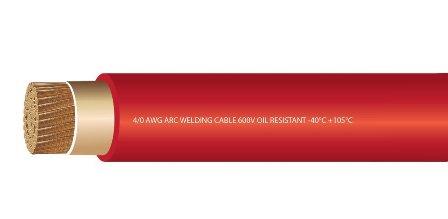Welding is a profession of precision and care; no matter the type of project, working with hot metal and electrified cable is a task that requires expertise and quality supplies. One of the most difficult challenges that many welders are surprised by at the last minute on a job site is dealing with tight spaces. While the obvious challenges of tight space can involve dealing with debris, heat, and the worker’s ability to move, the challenge that is most frequently overlooked is whether your cable will actually be able to bend into the space to begin with. This article is devoted to making sure that you don’t ever end up having to deal with flexibility issues by ensuring you know what characteristics make for Flexible Welding Cable.
1. Carefully Chosen Insulation
Choosing insulation is a choice that has to be weighed carefully. It’s never good to use cables with insulation that is not strong enough for the environment it will be used in; however, it is also true that stronger insulation reduces flexibility in a significant manner. In order to choose the right cable for the job, you need to consider what environmental dangers you’ll be working around. Oils, cleaning solutions, seawater, and high moisture are necessary to consider when deciding what cable insulation is appropriate for your job.
The key to finding flexible welding cable will be choosing a cable that balances the level of protection and durability you need and the ability to work with the spaces you’ll be working with. To do that, you’ll need to document environmental hazards and cross-reference them with the cables you are considering. Thankfully, most cables will include their certifications in their documentation or listed on their packaging.
2. Gauge
Another key factor in the flexibility of any cable is the gauge of the cable. Gauge refers to the thickness of the cable; the thicker the cable is, the less flexible it will be. However, it is important to remember that the gauge of a cable also affects its ampacity, or how much current it can carry. If you need more flexibility, you can often go for a smaller gauge cable by purchasing a shorter cable. If you’re working in a particularly tight space, going with a short, smaller gauge cable can ensure that you end up with a flexible welding cable that will do the job right.
3. High Strand Count
One of the best ways to improve a cable’s flexibility in the manufacturing process is to braid the copper in extremely fine strands. High strand count cables have large numbers of thinner copper strands, which means that the copper bends more easily without adding or removing thickness from the cable. Choosing a high strand count cable is also likely to give you a cable that is higher quality and more durable since the manufacturing process of high strand count cables is more involved.
Once again, when choosing high strand count cables, it may be important to consider using a shorter cable, as longer lengths of high strand count cable can become more expensive than low strand count cables. Thankfully, strand count has a negligible effect on ampacity, meaning that you do not need to realistically include it in your ampacity calculations.
When you’re ready to buy a flexible welding cable, make sure you shop with a company that has your needs in mind. Here at www.ewcswire.com, our team of professionals and experts can help you find the cables you need quickly, easily, and for the best prices on the web. Come visit us today!
For more information about Fire Alarm Cables and Marine Battery Cable Please visit : Electric Wire & Cable Specialists (EWCS).












No Comments